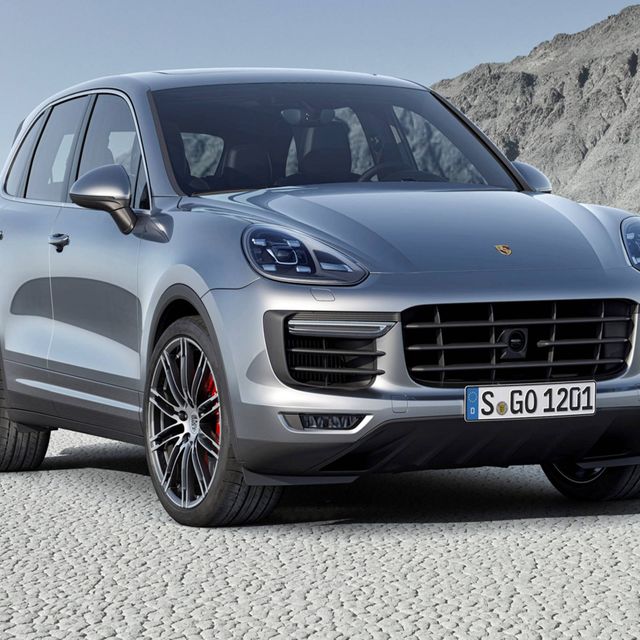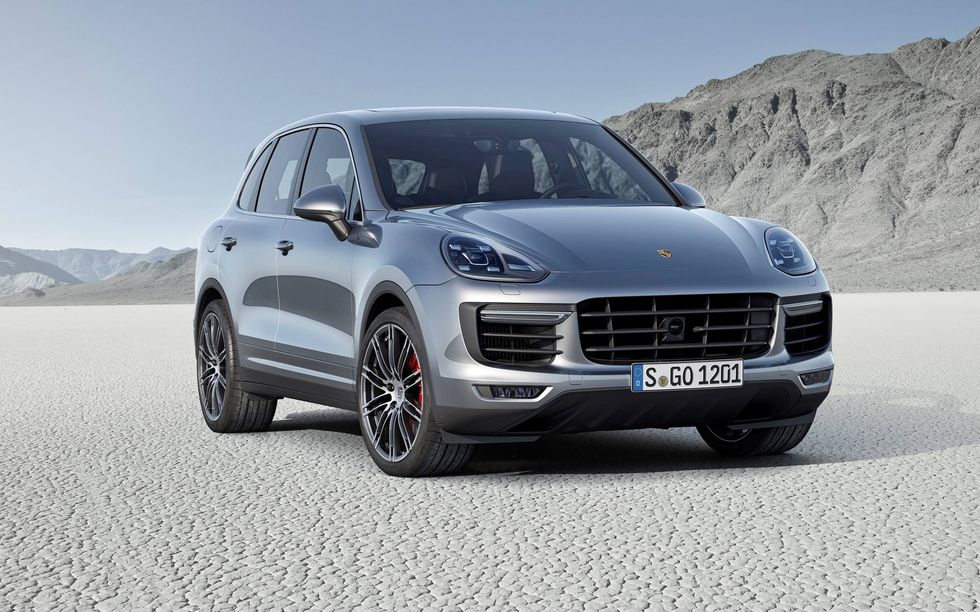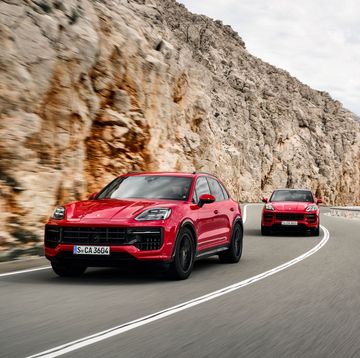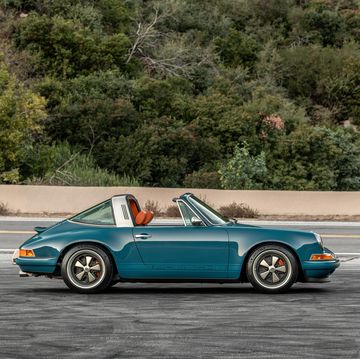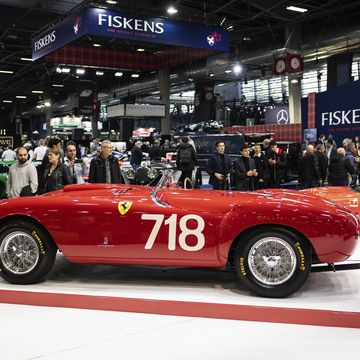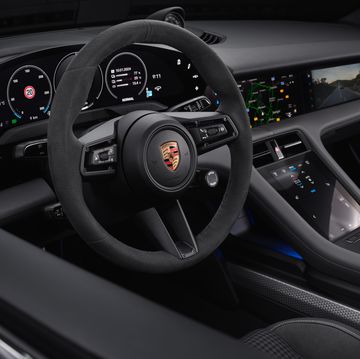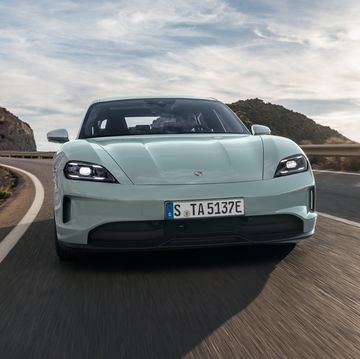Porsche has revealed a facelifted version of its strong-selling, second-generation Cayenne, including a new-to-the-range 410-hp gasoline-electric S E-Hybrid model that is claimed to offer 0-62 mph acceleration in 5.9 seconds, a 151-mph top speed along with combined cycle consumption of 69.2 mpg (U.S.) and a zero-emission electric range of 22 miles at speeds up to 78 mph.
Set to make its public debut at the upcoming Paris motor show prior to the start of North American sales before the end of the year, the reworked Cayenne receives a series of exterior and interior design changes together with a range of reworked gasoline and diesel engines allied to new fuel saving technology -- all aimed at providing it with fresh appeal four years after it first arrived in local showrooms.
The midlife styling changes appear subtle but bring some significant changes to the front end of the Cayenne, which receives a larger engine bay aperture. It has a new bumper with additional blades within the air ducts for more efficient use of the intercoolers, more angular headlamps with standard Xenon main beams (LED with Porsche Dynamic Light System on the top-of-the-line Turbo), redesigned front wings and a larger hood boasting subtle contouring.
At the rear, there are revised taillights that, like the headlamps, adopt a more angular shape. The license plate recess and opening mechanism now also blend more elegantly into the tailgate. The Porsche design team has also added a revised bumper with integrated tailpipes.
Changes inside include a new multifunction steering wheel with shift paddles -- modeled on those used on the 918 Spyder -- as standard equipment together with a more contoured rear seat that comes with optional ventilation.
Heading the long list of efficiency-boosting features is a new coast function as well as an improved version of the existing model’s stop/start system -- both of which have been integrated into its standard eight-speed automatic gearbox.
Further innovations include active air flaps located behind the grille. They open or close depending on the cooling requirements for the engine, constantly adjusting the volume of air entering the engine bay and helping to reduce aerodynamic drag.
New to the Cayenne lineup is the S E-Hybrid, which replaces the S Hybrid. It runs the same Audi-engineered supercharged 3.0-liter V6 direct-injection gasoline engine as its predecessor. With 328 hp and 427 lb-ft of torque, it is mated to a new electric motor that develops more than double the power of its predecessor at 94 hp.
Altogether, Porsche’s third dedicated plug-in hybrid model, after the 918 Spyder and Panamera S E-Hybrid, delivers a combined output of 410 hp at 5,500 rpm and 434 lb-ft of torque between 1,200 and 4,000rpm, improving on the model it replaces by 35 hp and 7 lb-ft.
The S E-Hybrid is claimed to accelerate 0.6 seconds faster than the S Hybrid from zero to 62 mph, with an official time of 5.9 seconds. Top speed has also increased, but only incrementally, to 151 mph. Porsche quotes a zero-emissions electric range of between 11 and 22 miles depending on the topography of the road and driving style. Top speed in electric mode is limited to 78 mph.
In further changes, Porsche has replaced the naturally aspirated 4.8-liter V8 direct-injection gasoline engine in the Cayenne S with a new twin-turbocharged 3.6-liter V6 direct-injection gasoline unit from the recently introduced Macan Turbo.
With 414 hp at 6,000 rpm and 405 lb-ft of torque, the new unit delivers an added 20 hp and 37 lb-ft, providing the Cayenne S with a 0.5-second improvement in its 0-62 mph time, which now stands at 5.4 seconds, together with an incremental increase in top speed to 161 mph. Fuel economy increases by 2.3 mpg (U.S.) to an official 24.7 mpg (U.S.).
Further up the range, the Cayenne Turbo gains a more powerful version of Porsche’s 4.8-liter V8 direct-injection gasoline engine developing an added 20 hp to 512 hp and an extra 37 lb-ft of torque to 553 lb-ft. Its 0-62 mph time is reduced by 0.3 seconds to an official 4.4 seconds, while top speed increases by 1 mph to 174 mph. In combination with the Cayenne’s new fuel-saving technology, combined-cycle fuel economy improves by 0.5 mpg (U.S.) at 21 mpg (U.S.).
Porsche has also increased the output of the 3.0-liter V6 common rail diesel engine in the Cayenne Diesel. It now produces an additional 16 hp and 12 lb-ft with 258 hp and 427 lb-ft of torque. The subtle bump in power cuts 0.3 seconds from the 0-62 time, while top speed increases by 1 mph to 137. Fuel economy jumps to 35.6 mpg (US) on the European test.
Together with the myriad engine changes, Porsche says it has fined tuned the Cayenne’s chassis to provide what it describes as a “greater spread between comfort and sportiness.”
The Cayenne Diesel starts at $62,695; the Cayenne S starts at $75,095; the Cayenne S E-Hybrid costs $77,395 and the Turbo comes in at $114,595. All prices include $995 in destination charges. The Porsche Cayenne goes on sale in November.
